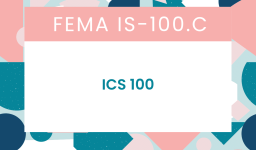Which of the following statements is true of a trial balance?
Answer: A trial balance is a list of all accounts with their balances because it is the list of ledger balances and each ledger has a debit or a credit balance.
Is retained earnings a debit or credit
Answer: The normal balance in the retained earnings account is a credit. This balance signifies that a business has generated an aggregate profit over its life. However, the amount of the retained earnings balance could be relatively low even for a financially healthy company, since dividends are paid out from this account.
T/F
Which of the following statements is true?
Debits are always used to describe an increase in an account balance.
Debits are always used to describe a decrease in an account balance.
Debits may be used to describe either an increase or a decrease in an account balance.
Which of the following statements is true?
Debits describe increases in assets and decreases in stockholders’ equity.
Debits describe increases in assets and decreases in liabilities.
Credits describe decreases in assets and increases in stockholders’ equity.
Credits describe decreases in assets and increases in liabilities.
All of the answers are correct.
ABC Company experienced an accounting event that is recorded in the following T-accounts:
Cash
5,000
Common Stock
5,000
This entry would cause the balance in the
cash account to increase and the balance in the common stock account to decrease.
cash account to decrease and the balance in the common stock account to increase.
cash account and the balance in the common stock account to increase.
cash account and the balance in the common stock account to decrease.
Which of the following statements regarding a general journal is false?
Transaction data are recorded first in a journal.
Entries are recorded in chronological order in a journal.
Debits are recorded above credits in a general journal entry.
The amounts of debits and credits are shown in the same column.
The following general journal entry was recorded in the books of Miles Company:
Land 700
Cash 700
Based on this entry,
liabilities increased.
total assets were not affected.
equity decreased.
net income decreased.
Which of the following statements is true?
Transaction data are first recorded in the ledger and then posted to a journal.
Ledger accounts show beginning and ending balances.
The ledger is known as the point of original entry.
Accounting systems have either ledgers or journals but not both.
only permanent accounts.
only temporary accounts.
both permanent and temporary accounts.
Which of the following statements regarding a trial balance is true?
An equality between the total of the debit balances and the total of the credit balances provides proof that there have been no errors in the accounting system.
Most companies prepare a trial balance only once during the accounting period.
The accounting records may contain errors even if the total amount of debit and credit balances are equal.
The accounting records may be error free even if the total amount of debit and credit balances are not equal.
A $500 sale on account was recorded as a $5,000 sale on account. Only the amount was recorded in error.
A $250 entry to accounts receivable was recorded as $520. The corresponding credit to sales was recorded correctly.
A $300 debit that should have been recorded to accounts receivable was recorded in error as a debit to the cash account.
A $400 credit that should have been recorded to accounts receivable was recorded in error as a credit to accounts payable.
Bessemer Company collected $9,000 cash that was due on an account receivable. Bessemer’s accountant recorded the entry as a debit to cash and a credit to service revenue. Based on this information alone,
the total of the debit side of the trial balance will more than the total of the credit side.
the total of the debit side of the trial balance will less than the total of the credit side.
the total of the debit side of the trial balance and the total of the credit side of the trial balance will be equal.
The answer cannot be determined from the information provided.
The following adjusted trial balance was drawn from the records of the Dakota Company.
Account Title Dr Cr
Cash 500
Equipment 2,000
Accounts Payable 1,000
Common Stock 700
Retained Earnings 600
Service Revenue 900
Operating Expenses 600
Dividends 100
Totals 3,200 3,200
Based on the information in the trial balance, the total amount of the debit column is
higher than the total amount of assets that will appear on the balance sheet.
lower than the total amount of assets that will appear on the balance sheet.
equal to the total amount of assets that will appear on the balance sheet.
equal to the total amount of expenses and dividends.
The following adjusted trial balance was drawn from the records of the Dakota Company.
Account Title Dr Cr
Cash 500
Equipment 2,000
Accounts Payable 1,000
Common Stock 700
Retained Earnings 600
Service Revenue 900
Operating Expenses 600
Dividends 100
Totals 3,200 3,200
Based on the information in the trial balance, the amount of net income shown on the income statement would be
$900
$800
$300
$200
The following adjusted trial balance was drawn from the records of the Dakota Company.
Account Title Dr Cr
Cash 500
Equipment 2,000
Accounts Payable 1,000
Common Stock 700
Retained Earnings 600
Service Revenue 900
Operating Expenses 600
Dividends 100
Totals 3,200 3,200
Based on the information in the trial balance, the amount of cash flow from operating activities would be
$900
$500
$300
The amount of cash flow from operating activities cannot be determined from the information provided in the trial balance.
Which of the following statements is true?
Closing the revenue account increases total stockholders’ equity.
Closing expense accounts increases total stockholders’ equity.
Closing the dividend account increases total stockholders’ equity.
None of the statements is true.
Closing the revenue account increases retained earnings.
Closing expense accounts decreases retained earnings.
Closing the dividend account decreases retained earnings.
All of the statements are true.
The journal entry to close the revenue account would include which of the following?
a debit to both the revenue and the retained earnings account.
a credit to both the revenue and the retained earnings account.
a debit to the revenue account and a credit to the retained earnings account.
a credit to the revenue account and a debit to the retained earnings account.
Which of the following journal entries would be required to close a salaries expense account?
Salaries Expense XXX
Retained Earnings XXX
Retained Earnings XXX
Salaries Expense XXX
Salaries Expense XXX
Cash XXX
Salaries Payable XXX
Retained Earnings XXX
Salaries Expense XXX
Closing the dividends account would require which
A debit to the retained earnings account.
A debit to the dividends account.
A credit to the common stock account.
A credit to the cash account.
The following adjusted trial balance was drawn from the records of the Dakota Company.
Account Title Dr Cr
Cash 500
Equipment 2,000
Accounts Payable 1,000
Common Stock 800
Retained Earnings 500
Service Revenue 900
Operating Expenses 600
Dividends 100
Totals 3,200 3,200
Based on the information in the trial balance, the after closing balance in the retained earnings account will be
$1,400
$300
$700
$200
The following adjusted trial balance was drawn from the records of the Dakota Company.
Adjusted Trial Balance
Account Title Dr Cr
Cash 500
Equipment 2,000
Accounts Payable 1,000
Common Stock 800
Retained Earnings 500
Service Revenue 900
Operating Expenses 600
Dividends 100
Totals 3,200 3,200
Based on the information in the adjusted trial balance
the total of the debit column in the post-closing trial balance will be $3,200.
the total of the credit column in the post-closing trial balance will be $2,500.
the total of the debit column in the post-closing trial balance will be $2,700.
the total of the credit column in the post-closing trial balance will be $2,900.
Sales divided by long-term assets
Net income divided by total assets
Net income divided by long-term assets
Sales divided by total assets
If a company has total assets of $40,000, sales of $88,000, cost of goods sold of $55,000, and net income of $4,400, what is its return on assets ratio?
10%
5%
11%
8%
Gamma Company = 7%
Alpha Company = 8%
Beta Company = 9%
Sigma Company = 10%All other things being equal, which company appears to conduct the most efficient use of its assets?
Gamma Company
Alpha Company
Beta Company
Sigma Company
Which of the following formulas yields the debt to assets ratio?
Total assets divided by total liabilities (debt)
Total liabilities (debt) divided by total stockholders’ equity
Total liabilities (debt) divided by current liabilities
Total liabilities (debt) divided by total assets
If a company has total assets of $100,000, current assets of $20,000, total liabilities of $60,000, current liabilities of $10,000, and total stockholders’ equity of $40,000, what is its debt to assets ratio?
60%
80%
40%
10%
Assume four companies have the following debt to assets ratios:
Trent Company 57%
Gardendale Company 39%
Palmetto Company 78%
Dunes Company 82%
All other things being equal, which company appears to have the lowest financial risk?
Gardendale Company
Trent Company
Palmetto Company
Dunes Company
Which of the following formulas yields the return on equity ratio?
Net income divided by total stockholders’ equity
Net income divided by total common stock
Net income divided by price paid to purchase stock
Sales divided by total stockholders’ equity
If a company has total assets of $800,000, total liabilities of $300,000, total stockholders’ equity of $500,000, sales of $400,000, and net income of $80,000, what is its return on equity ratio?
19%
16%
20%
10%
Using borrowed money to increase the return on equity is called
operating leverage.
ratio leverage.
asset leverage.
financial leverage.
Assume four companies have the following return on equity ratios:
Toccoa Company 25%
Helen Company 19%
Clarksville Company 16%
Livonia Company 14%
All other things being equal, which company appears to have the highest financial leverage?
Clarksville Company
Livonia Company
Helen Company
Toccoa Company
Toccoa Company
Financial leverage occurs when a company is able to invest in assets that produce a higher return than the cost of debt. For example, if a company pays 8% to borrow money and produces a return on assets of 12%, the 4% spread (12% – 8%) benefits the stockholders. Accordingly, all other things being equal, companies with higher debt will produce a higher return on equity.
T/F
The gross margin percentage is determined by
dividing net sales by the gross margin.
dividing the gross margin by the net sales.
dividing the gross margin by the cost of goods sold.
dividing the cost of goods sold by the gross margin.
The following information was drawn from the annual reports of two companies.
Company A Company B
Sales revenue $ 1,000 $ 2,000
Cost of Goods Sold (600) (1,100)
Gross Margin 400 900
Operating Expenses (220) (700)
Operating Income 180 200
Gain on the sale of equipment 150 0
Net Income $ 330 $ 200
Based on this information, Company A’s gross margin percentage is
60%
55%
45%
40%
40%
$400 gross margin ÷ $1,000 sales revenue = 40%
Underwood raised its per unit sales price.
Underwood’s supplier lowered its per unit price.
Underwood sold more products.
Underwood started taking advantage of purchase discounts.
Underwood sold more products.
The gross margin percentage is a measure of the difference between the sales price and the cost of goods sold. Assuming all other things being equal, the gross margin percentage will increase if the per unit sales price increases or the per unit cost of goods sold decreases. Note that taking purchase discounts will decrease the per unit cost of goods sold. In contrast, selling more products will not change the gross margin percentage if the sales price and the cost of goods sold remains constant. For example, assume a product that cost $6 per unit is sold for $10 per unit. The per unit gross margin is $4 ($10 sales price – $6 cost of goods sold). If one unit is sold, the gross margin percentage is 40% ($4 gross margin ÷ $10 sales revenue). If five units are sold, the gross margin percentage is still 40% [($4 gross margin x 5 units) ÷ ($10 sales price x 5 units)].
The following information was drawn from the annual reports of two companies.
Company A Company B
Sales revenue $ 1,000 $ 2,000
Cost of Goods Sold (600) (1,100)
Gross Margin 400 900
Operating Expenses (220) (700)
Operating Income 180 200
Gain on the sale of equipment 150 0
Net Income $ 330 $ 200
Based on this information, Company B’s return on sales is
55%
45%
35%
10%
10%
$200 operating income ÷ $2,000 sales revenue = 10%
The following information was drawn from the annual reports of two companies.
Company A Company B
Sales revenue $ 1,000 $ 2,000
Cost of Goods Sold (600) (1,100)
Gross Margin 400 900
Operating Expenses (220) (700)
Operating Income 180 200
Gain on the sale of equipment 150 0
Net Income $ 330 $ 200
Assume both companies receive a $1,000 increase in sales and the return on sales ratio does not change. Under these circumstances
Company A’s operating income would increase by $180.
Company B’s operating income would increase by $200.
Both answers are correct.
Neither answer is correct.
Company A’s operating income would increase by $180.
Company A’s return on sales ratio is 18% ($180 operating income ÷ $1,000 sales revenue). Based on the return on sales ratio, Company A’s operating income will increase by $180 ($1,000 additional sales x 18%). Company B’s return on sales ratio is 10% ($200 operating income ÷ $2,000 sales revenue). Based on the return on sales ratio, Company B’s operating income will increase by $100 ($1,000 additional sales x 10%).
The following income statements were drawn from GreyCo’s annual report:
Year 1 Year 2
Sales revenue $ 1,000 $ 2,000
Cost of Goods Sold (600) (1,100)
Net Income $ 180 $ 100
At the end of Year 1 GreyCo developed a plan based on a new business strategy. Specifically, the Company planned to move its store to a more expensive location and then to raise its prices to cover the additional cost. Which of the following best describes the results of implementing the plan?
The strategy was successful because the company was successfully able to increase its prices.
The strategy was successful because the company was able to lower its operating cost.
The strategy was unsuccessful because the company was not able to raise its prices enough to cover the additional operating expenses.
The strategy was unsuccessful because the company was unable to raise its prices.
The strategy was unsuccessful because the company was not able to raise its prices enough to cover the additional operating expenses.
Based on the fact that net income decreased the plan was not successful. The fact that the company’s gross margin percentage increased from 40% ($400 ÷ $1,000) to 45% ($900 ÷ $2,000) means the company was successful in raising its prices. However, this benefit was offset by the increase in operating expenses. In Year 1 operating expenses were 22% of sales ($220 operating expenses ÷ $1,000 sales). In Year 2 operating expenses were 40% ($800 operating expenses ÷ $2,000 sales revenue). In summary, the 5% (45% – 40%) increase in the gross margin percentage was insufficient to offset the more significant 18% (40% – 22%) increase in operating expenses. This conclusion is reinforced by the fact that the return on sales ratio dropped from 18% ($180 net income ÷ $1,000 sales revenue) to 5% ($100 net income ÷ $2,000 sales revenue).



